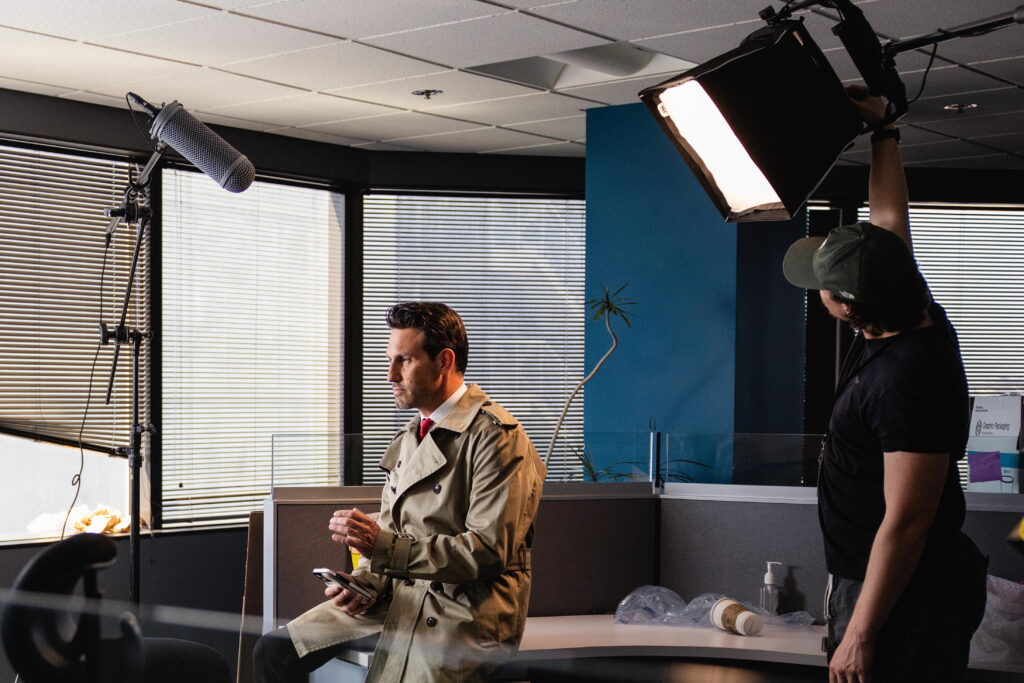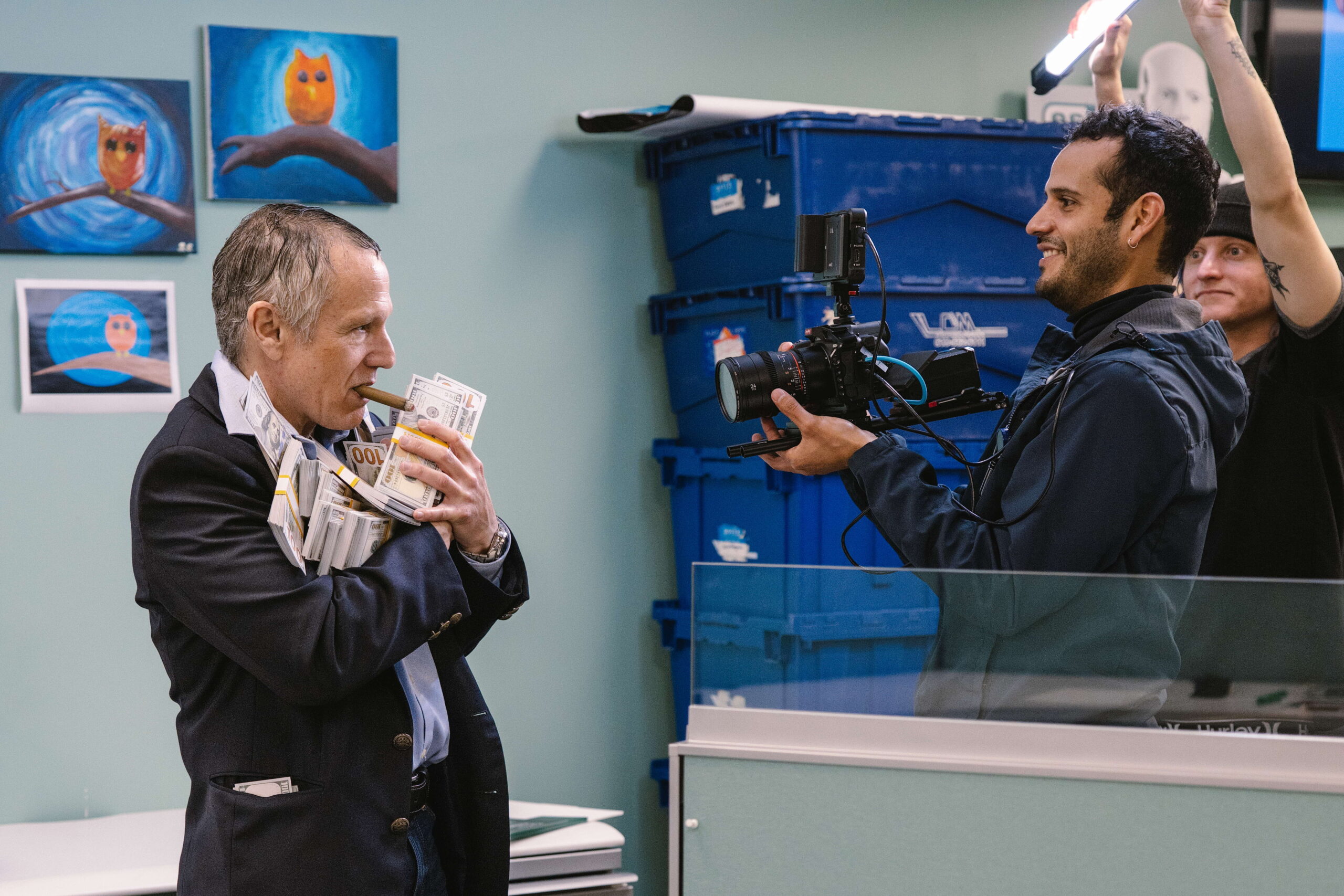This post provides a breakdown of video production costs used in the creation of a full scale video production.
Follow the Money
During the first conversation of any video proposal, the word costs will appear. This is the guideline for how the rest of the production will carry forward. When a producer knows what range they are working with they need to plan out where that money will go. The proportions can vary but there are many factors to planning this out. Just like with a car or house repair there is a division between parts and labor.
In film terms, this is equipment and talent. Low-budget videos will take advantage of what equipment is available and focus mainly on paying the talent for their time. Higher-end productions might engage in top-quality effects that require a higher end of the equipment budget. Here is a breakdown for producers and clients alike to understand where the money is potentially going.
Keeping Pre-Production Video Costs Down
Pre-Production entails the costs of writing the script. Then converting it to a shot list and a storyboard. As well as meetings with the producer. Skipping on any of these steps has several drawbacks for any production. Discuss all the planning for the next phases during these meetings. Including how much to spend on the actual production.
Finding a set location and scheduling will also add to the overall pre-production budget. Often times the script needs revisions. Scheduling conflicts also arise. Filming permits are a must in any outdoor locations and can add up, especially when local San Diego venues require a license in order to shoot for commercial intent.
Insurance is another cost to consider as the liability for being sued by anyone injured. This can ruin a project and a company. If the client has a well-planned vision with a clear message then this can help lower costs. The same research and strategizing are still coming out of the bottom line.
Mid-range productions will take about 20% of the budget to deal with pre-production. If you are working on the lower end then you might spend a higher percentage here. Planning is essential to stretching every dime.
Costs While Cameras are Rolling
The costs to keep the cameras rolling are many. This includes paying your crew, on-screen talent, equipment costs, location payments, and meals. The crew can range depending on how many camera operators you need. Don’t forget hair and makeup and include the hired hands of grip, audio, and lighting departments.
Having a specialist for each task is essential and you can’t overburden them. The project needs to flow smoothly or the quality of the video will suffer. Carefully planning each day of a shoot is crucial. Every person on set will cost money. This is how the bills pile up. Pre-production with no significant revisions can already amass to 50% of the budget. Again this is a generalization but the bulk of the work is done at this moment and timing is of the essence. Depending on the video you are making, you might be able to hire talent for almost no costs. Remember you get what you pay for.
When it comes to advertising they will be less likely to do it than for a low-budget art film. Everyone needs to eat are there are guild rules for required breaks. Catering service options will not take up a significant percentage of the budget unless everyone else is working for free. But providing the proper nourishment is incredibly helpful for the stresses that come with being on set.
When you hire a video production company, they often come with their own cameras and other equipment. Many times you must rent special equipment for a particular shoot. There are some disposable costs that must be added in every time the cameras roll. Video production companies must consider the costs of their overhead equipment. They should apply it rationally to the cost of the production. Thankfully not much is shot on celluloid film anymore. That was a major consideration for young filmmakers in the 20th Century.
Filming locally has several advantages as gas and airline fees to a distant location add in significantly. Some states offer tax incentives for filming there. Also, costs being cheaper in that locale for some productions to consider. It sometimes comes down to the math.

Post-Production Prices
Once the director says it’s a wrap the crew can pack up their gear and flee the scene but the work is far from over. Post-Production costs will suck up the remaining 25% of the budget and this is a conservative estimate. The editor needs sufficient time to arrange all the clips and correct any footage. Plus they must smooth the cuts and transitions.
Timing is less constrained during post-production unless it is urgent to send the finished video to distribution. Any graphics, voice overs, animation, and special effects will add up the costs. Animation and special effects are real budget killers but much more possible in the digital realm than previous decades.
During post-production, the video might go between the studio and the client for specific revisions and updates. This is again, very common but some videos need to have legal approval which can also affect the total bill.
All these costs might seem scary. To add further chills there are some omitted features. Nevertheless, creating video content for your marketing strategy can be well worth the production costs. Even making internal training videos can save a lot more in labor hours and increase sales.
An experienced producer who can get you the vision you are looking for within the budget you can afford is priceless. Clients and producers alike should establish what the payment options will be. Sticking to a strict budget has its limitations. It can go wrong in many places but some still prefer it to charging everything by the hour.
For the cost-conscious marketer be sure to read our Tips & Tricks to Help You Make the Most of Your Video Marketing Budget for 2020




